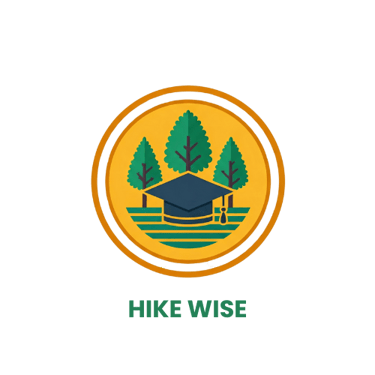Integrating Outdoor Sports in Education: From Needs Analysis to Action
Project Status, Needs Analysis, and Next Steps
8/28/2025


Project Status
The project is progressing in accordance with its planned objectives, with the overarching aim of integrating outdoor sports—particularly hiking—into secondary education as a means of promoting both physical health and environmental awareness. To date, a one day Transnational Project Meeting (TPM) and the bi-weekly online knowledge-sharing meetings have been successfully implemented. These activities have generated significant experiential input, which is currently being utilized to inform the development of subsequent project outputs.
At this stage, the project is primarily focused on two key activities: the systematic collection of stakeholder perspectives and the development of a comprehensive manual designed to support teachers and schools in effectively incorporating outdoor sports into secondary education curricula.
Summary and Conclusion of the Needs Analysis
The needs analysis has been structured to capture a wide spectrum of perspectives through engagement with secondary school teachers, university students preparing to become physical education teachers, and pupils across Spain, Belgium, Romania, Greece, and Turkey. Preliminary findings emerging from the data collection process indicate the following:
Across all partner countries, there is a strong demand for practical knowledge and guidelines in outdoor physical education. Teachers emphasized that ready-to-use resources for activities like hiking are largely missing. In fact, 82% of surveyed teachers reported not having access to practical guides or lesson plans, leaving them uncertain in implementation. .
The findings also reveal a clear need for teacher training in outdoor education. Although theoretical preparation exists, the majority of teachers feel underprepared when it comes to practical delivery. 74% of PE teachers and student teachers described their university-level training in outdoor sports as insufficient, often limited to short or one-off modules. This highlights the importance of structured professional development, particularly in lesson planning, safety protocols, and risk management.
Another strong theme is the high level of student interest in connecting physical activity with nature. Focus group discussions showed that 88% of students would like to see outdoor sports—especially hiking—integrated into PE at least once a week. Their motivation is closely linked to the joy of being outdoors with friends, enjoying fresh air, and experiencing adventure.
Equally important is the consideration of regional specificities when designing outdoor programs. Both teachers and students stressed that activities should reflect local ecosystems and cultural contexts. 60% of teachers highlighted regional opportunities—such as kayaking or surfing in Spain, skiing in Romania, and hiking or canoeing in Turkey—as essential elements for effective and engaging program design. This diversity underscores the potential of drawing on local strengths to enrich the project.
To ensure alignment with the project’s core objectives, the needs analysis focused primarily on physical education professionals. Seventy-five percent of participants were current or future PE teachers, while the remaining 25% were secondary school students. This balance ensured that the findings reflect both the perspectives of those who will design and implement outdoor education, and the expectations of students who will directly benefit from it. Drawing exclusively on qualitative insights from interviews and focus groups, the study provides a comprehensive understanding of the current situation as well as the future requirements for integrating outdoor learning into physical education.
Next Steps
Informed by the outcomes of the needs analysis, the subsequent stage of the project (A2.3) will focus on the development of the manual. The manual will:
Provide structured guidance for teachers on integrating hiking and orienteering into formal education, with emphasis on health promotion, environmental stewardship, and inclusivity.
Incorporate frameworks for lesson planning, compliance with European legal requirements, and effective risk management.
Offer a collection of practical and ready-to-use educational activities (e.g., mountain clean-up campaigns, environmental awareness exercises).
Include strategies to ensure inclusive participation, particularly for students with special educational needs (SEN).
Present infographics and practical guidelines (e.g., a decalogue of responsible behaviour in nature) to facilitate ease of use and accessibility.
The manual will initially be drafted in English and subsequently translated into Spanish, Greek, Dutch, Romanian, and Turkish. Following this, it will undergo an evaluation process by trainers and physical education teachers participating in the project’s training activities. Feedback collected during this phase will be systematically incorporated into the final version, which will be subject to professional proofreading, graphic design, and publication.
Conclusion
By synthesizing stakeholder input with evidence-based pedagogical practices, the project is contributing to the establishment of a sustainable and innovative model for physical education across Europe. Hiking is thus conceptualized not only as a sport, but also as a pedagogical tool that fosters physical health, environmental responsibility, and intercultural cooperation among young learners.
The forthcoming manual will represent a key intellectual output of the project, serving as a foundational resource for educators. In doing so, it will ensure that future generations perceive the natural environment not merely as a recreational space, but as a meaningful educational setting that cultivates lifelong values.
Stay tuned to our upcoming updates through our social media channels!
© 2025. All rights reserved.
Follow us
Keep in Touch
The project “HikeWise” is co-funded by the Erasmus+ Programme of the European Union. The views expressed in the working papers, deliverables and reports are those of the project consortium partners. These views have not been adopted or approved by the Commission and should not be relied upon as a statement of the Commission’s or its services’ views. The European Commission does not guarantee the accuracy of the data included in the working papers and reports, nor does it accept responsibility for any use made thereof.
Project Number: 2024-1-ES01-KA220-SCH-000246218
